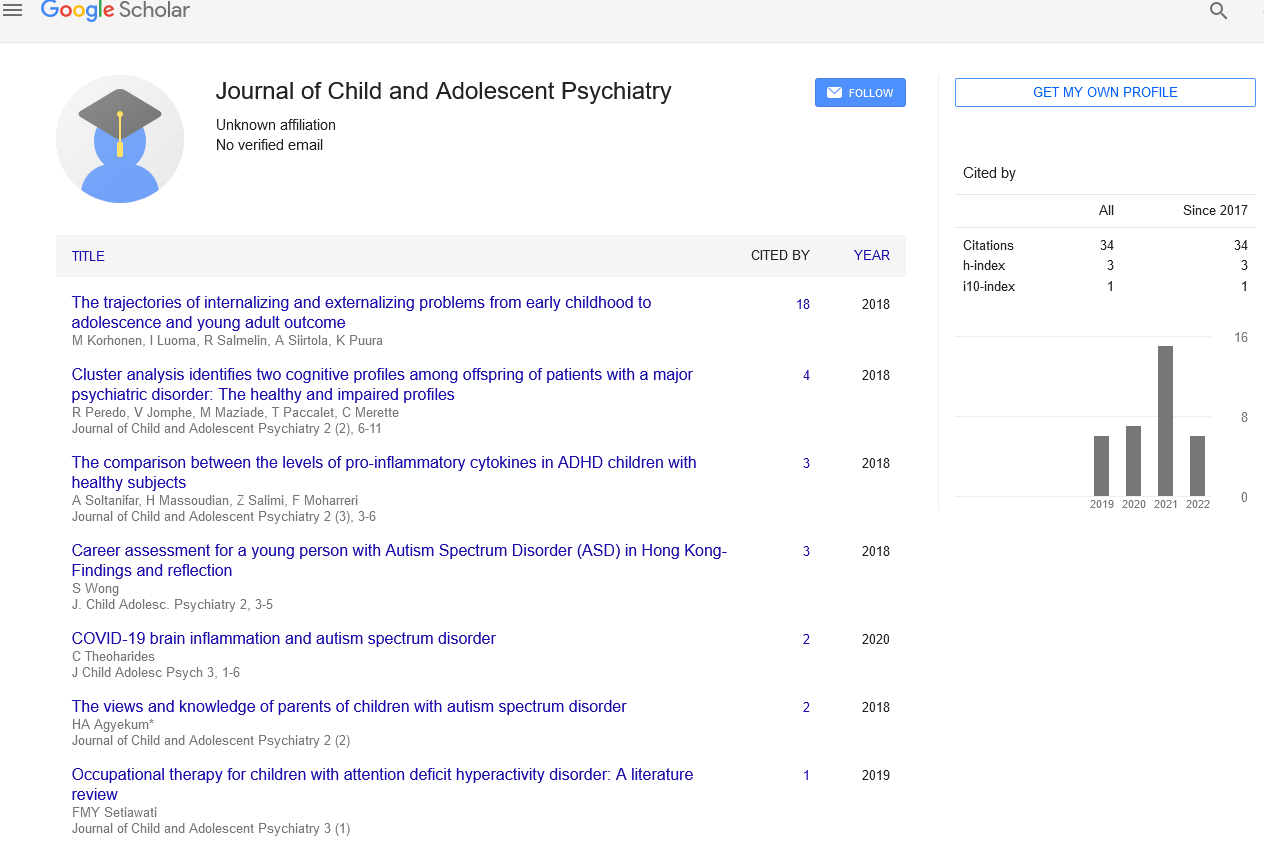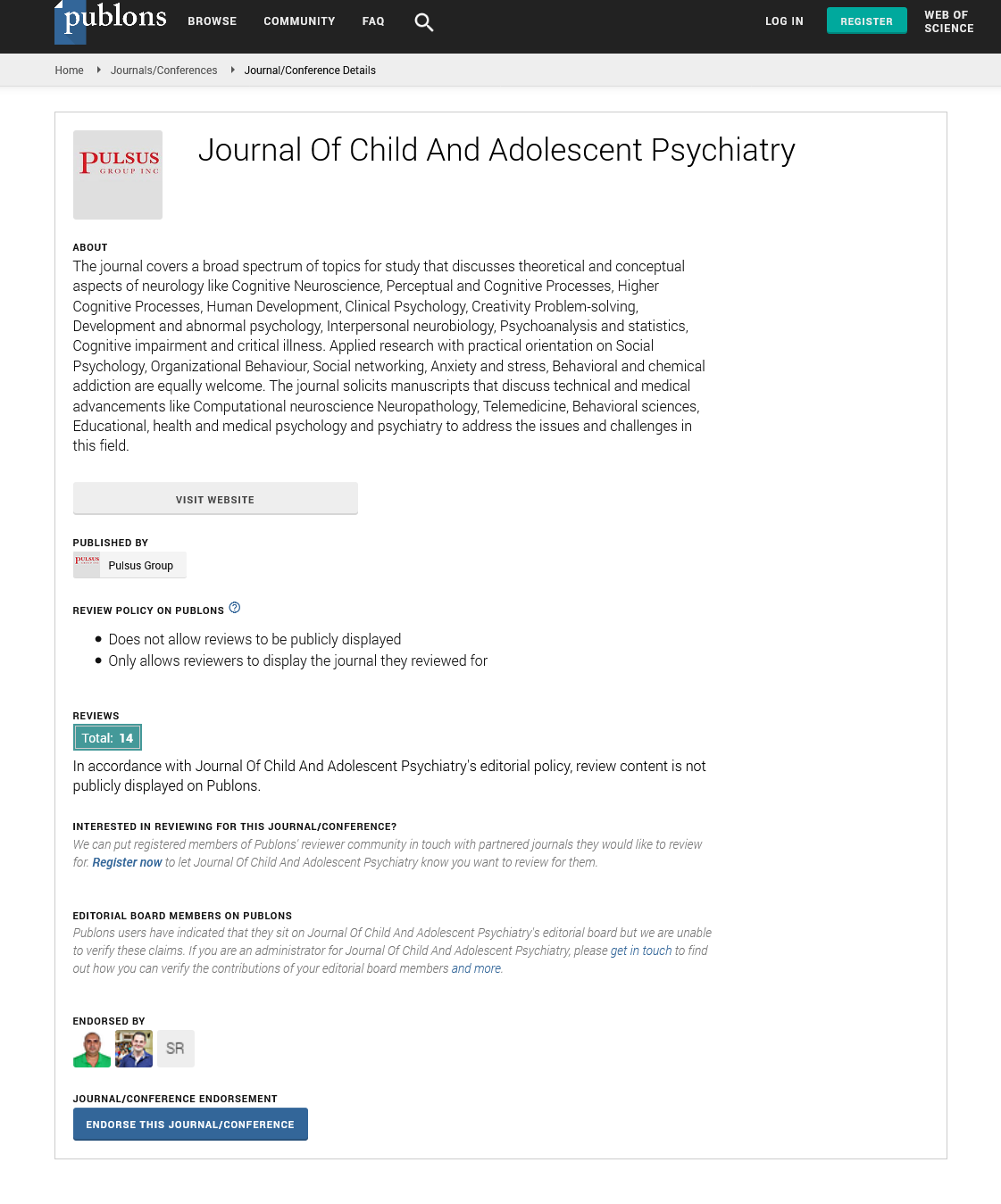Understanding depression in adolescents
Received: 31-Mar-2021 Accepted Date: Apr 14, 2021; Published: 21-Apr-2021
Citation: Shinde S. Understanding depression in adolescents. Child Adolesc Psych. 2021;5(S1):4
This open-access article is distributed under the terms of the Creative Commons Attribution Non-Commercial License (CC BY-NC) (http://creativecommons.org/licenses/by-nc/4.0/), which permits reuse, distribution and reproduction of the article, provided that the original work is properly cited and the reuse is restricted to noncommercial purposes. For commercial reuse, contact reprints@pulsus.com
Description
Depression is the leading cause of illness and disability in adolescents worldwide. Over 300 million people suffer this pathology in the world, which is characterized by a high suicide risk. It is the second most common cause of death among those aged 15-29 years. Understanding adolescents' symptom profile and help-seeking behaviors are crucial to developing contextually appropriate and effective interventions in low- and middleincome countries. But little is known about how adolescents explain their psychological distress and how they cope with mental health problems. Furthermore, empirical investigations that examine the inter sectionality of gender and caste, and class are rare. Understanding different experiences of depression and health-seeking behaviors require close examination of the unique factors related to mechanisms underlying distress and suffering in different intersections of caste, gender, and class to gain a better understanding of the epidemiology, etiology, and symptomatology of mental illness among adolescents.
Sachin Shinde and colleagues were interested in exploring school-going adolescents' understanding of depression and the help-seeking behavior that accompanied it in Nalanda district (state of Bihar) in India, which has one of the lowest human development indices in the country. To do this, they interviewed 100 teenagers (ages 15-18 years) from government-run secondary schools. Taking the findings together, they found the early and significant symptoms of depression were negative behavioral symptoms including persistent sadness, irritability, social withdrawal, and lack of focus. Other symptoms cited by adolescents included feelings of shame, being alone, hiding from friends and family, low energy, and disinterest in performing day-to-day activities. The diagnostic systems of ICD-101 and DSM-52 list change in appetite and weight gain/loss as the core symptoms of depression however, the study participants did not discuss these symptoms. This finding suggests that Indian adolescents may not associate these symptoms with their experience of depression and has implications for the understanding of the etiology of depression and treatment of depression in the context of Indian adolescents.
Psychosocial adversities acted as a risk factor that can trigger an onset of depressive disorders in the study participants. However, the study also revealed that adolescents’ experience of depression might differ by intersections of gender, caste, and socio-economic class. For example, girls were perceived to be more vulnerable to experience depression than boys were however, boys belonging to lower caste and/or lower socio-economic class might be more vulnerable to experience depression than upper caste girls might. Similarly, poverty was described as a powerful risk factor for the development of depressive disorder but experiencing poverty as a lower caste in the hierarchy of the Indian caste system has been labeled a “pathway to depression”.
Participants believed that experiencing symptoms of depression does not require medical intervention because everyday life situations are the cause of depression. Adolescents viewed trusted individuals–mothers of adolescents or elder siblings– as resources to approach when experiencing emotional and social problems. However, adolescents perceived seeking help from a teacher or school personnel as less preferred and often as a risk, mainly due to issues related to breach of confidentiality and judgmental attitude of teachers. This requires further investigations as schools are perceived as the ideal platform to address the health and mental health needs of adolescents.
In short, this study helps to advance scientific knowledge of understanding adolescent depression, available treatment options, and barriers to helpseeking and treatment for depression in adolescents in rural India. This has major implications for planning and implementing contextually tailored mental health interventions for adolescents in India as well as other developing countries.






